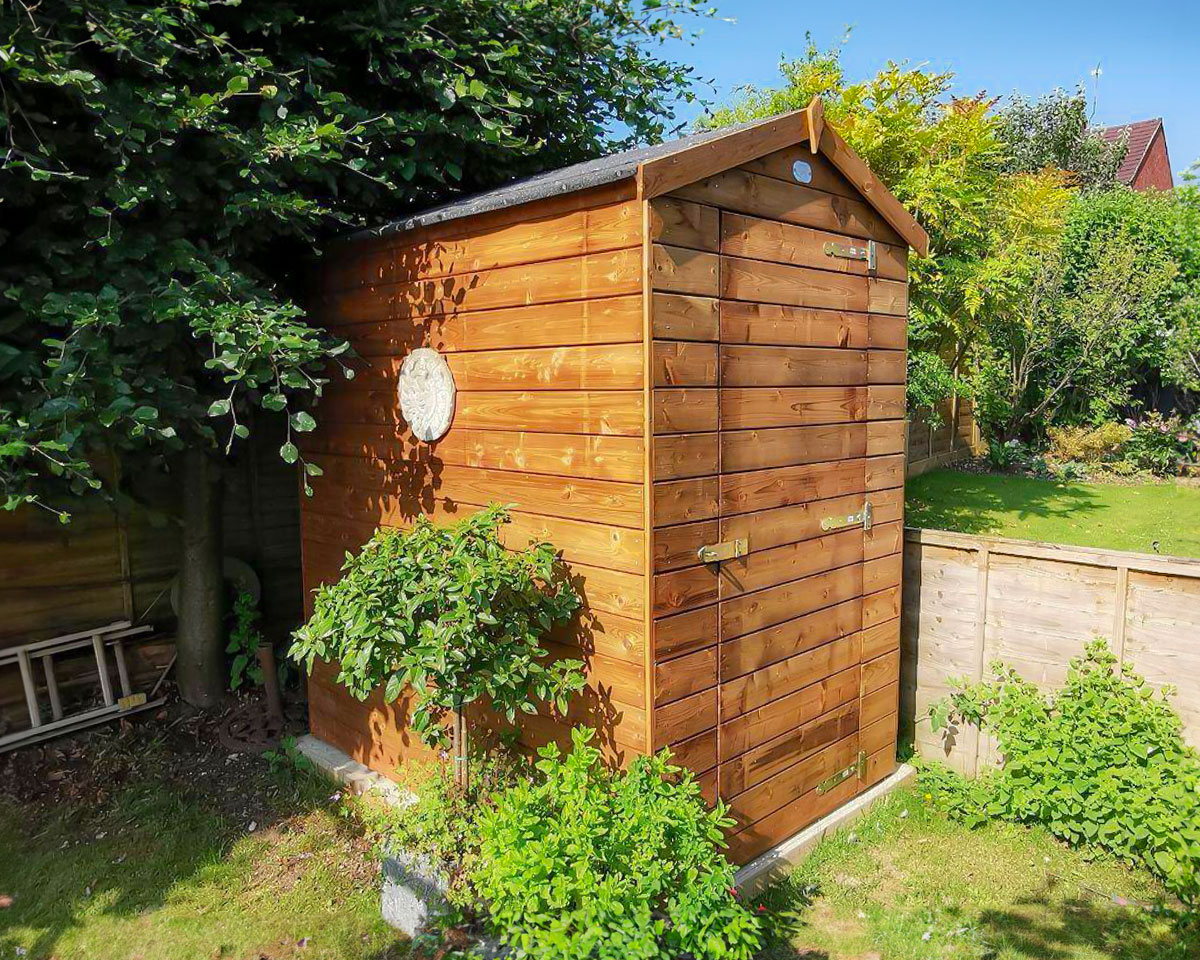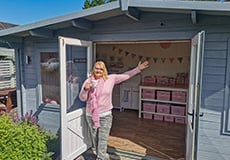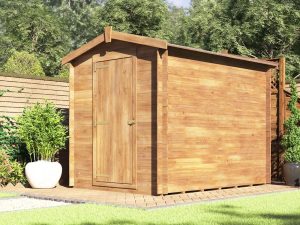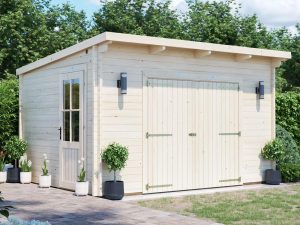The humble garden storage shed offers homeowners more benefits than you may have realised, and you don’t even have to be a keen gardener to feel the advantages. These garden buildings are a sound investment and can add considerably to your home’s value. You’ll be able to organise equipment, store hazardous materials like weedkiller, and have more space for the hobbies and activities you enjoy.
When it comes to choosing the right garden storage shed for your property, there are a number of things to take into account. Clearly, budget is always a key consideration. But here are some of the other things you may wish to think about:
1. Size
Think about how much footage your garden has, and take it from there. It may sound obvious, but remember you’ll need to be able to open doors and windows, and have room to manoeuvre when carrying out routine maintenance. Equally, it can be frustrating to install your shed only to realise you have run out of storage.
A corner shed could be ideal if space is at a particular premium. These clever designs are bigger inside than you think! And remember to take into account things like roof overhangs and rounded edges. Check your shed’s detailed specifications carefully before you commit.
2. What Will You Be Using Your Garden Storage Shed for?
This is another key consideration. Potting sheds need plenty of light from glazing, for example. If you’re storing valuable equipment in your unit, you’ll no doubt want to incorporate some high-level security measures (See below). Equally, be sure your shed will allow you to work comfortably, and that everything you want to store in it will fit. Do you want to use it as a base for a hobby, for storage, or even as a small pub or bar during the summer months?
3. Material Concerns
This may be an instinctive decision for you, or you may already have a clear idea about what you want. One material that offers numerous benefits when used for sheds is timber. The advantages include ease of both assembly and customisation, alongside durability and the way a wooden shed perfectly complements the natural setting of your garden.
Timber sheds need cladding, so factor that in as well. Options include cost-effective overlap cladding, in which boards are fixed to a wooden framework so that they overlap. But you could also go for tongue-and-groove and shiplap cladding as alternatives.
4. Roof Design
Personal preference and where you decide to position your shed will play their part. Here are some options:
Apex Sheds
These hugely popular styles offer a decent amount of height, with the highest point at the centre. Essentially, two roof panels fit together to form a triangular point at the centre. This creates plenty of headroom, along with, well, shed-loads of space for taller gardening equipment.
With a reverse apex model, the door goes below one of the shed’s longer sides rather than a gable. This creates maximum space for workbenches and manoeuvre, so it’s ideal if you’re using your shed as a garden workshop.
Pent roof sheds
These are more compact than apex versions, with sleek lines plus a single sloping side. The pent roof slants down towards the back so that the door opens at the highest side. With a lower roof profile than other styles, this design has a modern look.
5. Security
Clearly, this is affected by the value of what you want to store in your shed. Higher, smaller windows block entry and mean a potential intruder can’t see what’s kept inside. Most sheds will have a lock and key, while other security features include double bracing, hidden hinges and tamper-proof screws.
.jpg)
6. Maintenance
Think about how much time you can realistically spend maintaining your shed and what upkeep will be needed. It’s important to check the roof and base annually for signs of damage and to take prompt action as needed. Position your shed so that water from branches doesn’t constantly drip on the roof, potentially damaging it, and cut back any overhanging branches. Equally, wooden sheds specifically need treatment with a high-quality wood preservative to keep fungal decay and rot at bay.
7. All about the base
Whatever shed you have, you’ll need a firm, level base that’s secure and durable to support the structure as a whole. Indeed, base preparation is the first step in shed installation. Your base protects the whole shed, so it needs to be fitted with great accuracy and precision. Typically, a concrete version is recommended, although alternatives are available.
8. Flooring
Most timber sheds come with a floor as standard – although if you choose a metal unit, you may need to buy this separately. Be sure to check the specification carefully to see what is included, so you’re not hit with hidden extra costs. Obviously, if you’re storing heavier kit, you’ll need thicker floorboards. Timber or tongue-and-groove floorboards provide the best protection from ground moisture, and if you go for 12mm or thicker, you’ll be doing yourself a big favour. At the same time, pressure-treated floor bearers will help the longevity of both the floor and your garden storage shed as a whole.
A Wooden Shed from Dunster House
Garden sheds come in a huge line-up of shapes, sizes and styles suiting a range of budgets and tastes. At Dunster House, we’re confident one of our models will be absolutely right for you, whatever you’re after. Browse our website, read some customer reviews and contact us if you have any questions. Give us a call for an initial chat and we’ll take it from there.








